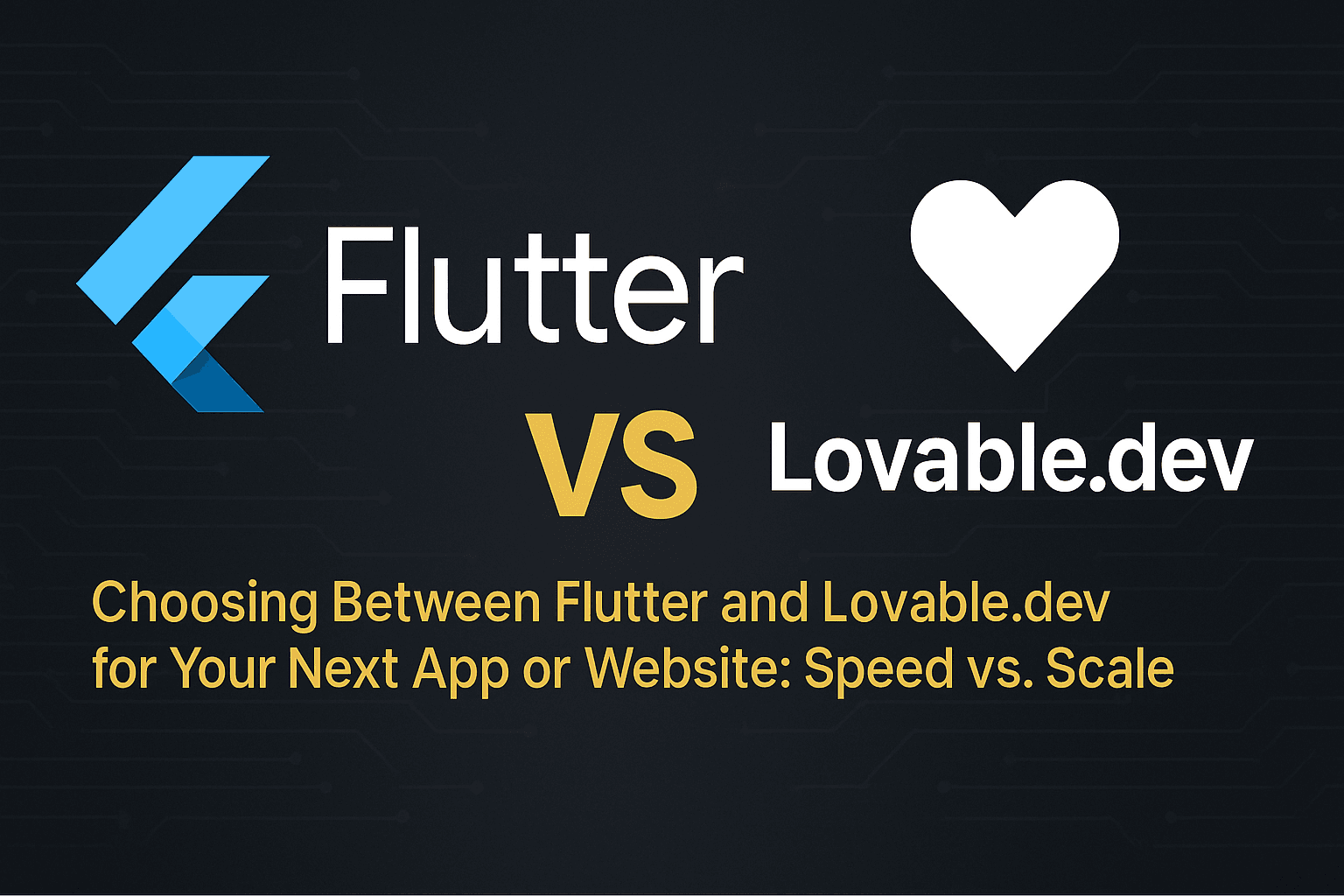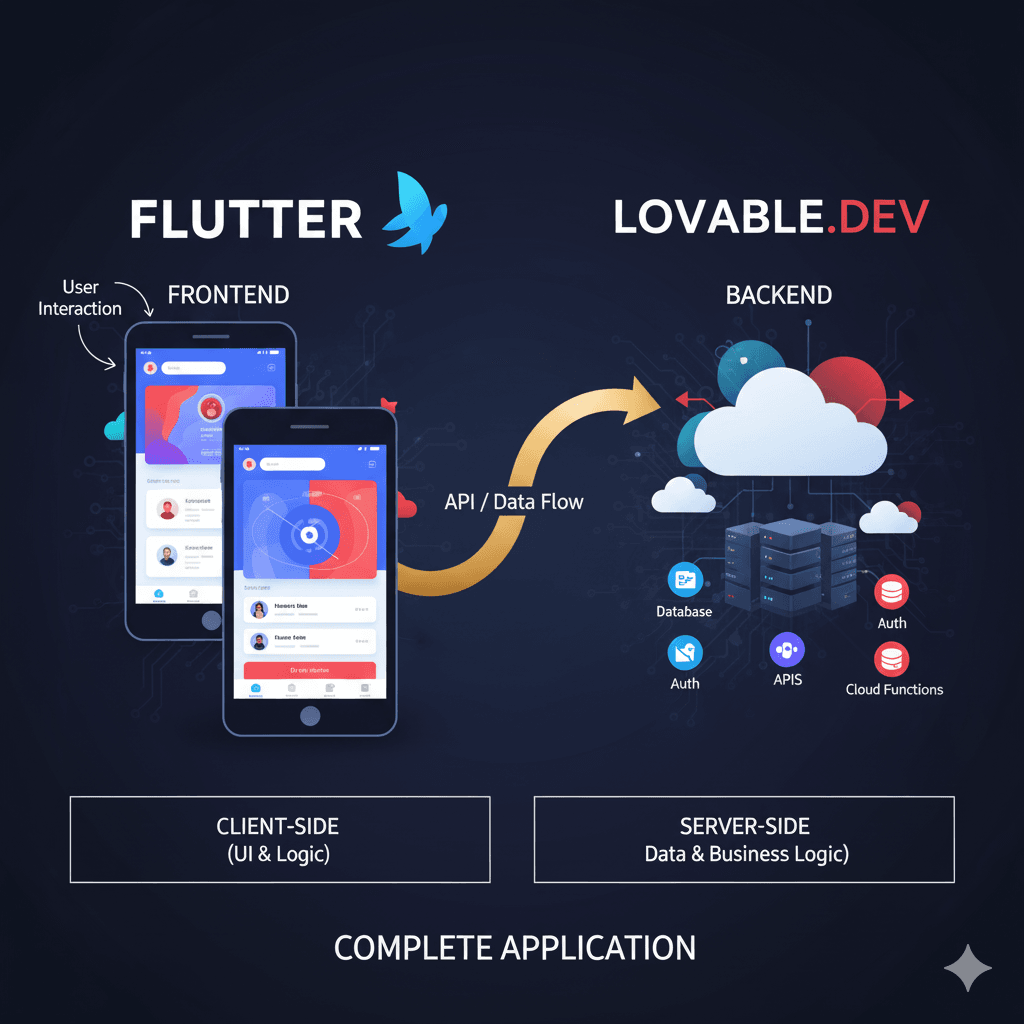Choosing Between Flutter and Lovable.dev for Your Next App or Website: Speed vs. Scale
Production Stack vs. MVP Stack: How to Choose the Right Build Plan for Your App or Platform
By Kellen Coleman, M.A.
AI & Business Manager | CPRFirm.com | MillionaireX.Ai

Meta Description
Before building your next app or digital platform, decide whether you need a full production stack for scale or an MVP stack for speed. This guide breaks down both approaches, Flutter vs. Lovable.dev, to help you build smarter, faster, and with purpose.
The Real Question: Speed or Ownership?
Every founder, developer, or creative visionary faces this crossroads: build something fast to test the market, or take the time to build something powerful that can scale globally.
Choosing the right stack defines how quickly you launch, how much you own, and how far your product can go. Let’s explore both sides without bias.
🏗️ The Production Stack (Flutter + Web)
Goal:
A high-performance platform built for long-term growth, scalability, and full brand control.
What It Looks Like
A production stack is built for creators and companies who plan to own their infrastructure and scale.
Web front-end: Frameworks like Next.js or Webflow handle your marketing site, media pages, and SEO-optimized portal.
Mobile app: Built with Flutter, giving you one codebase for iOS and Android and near-native performance.
Backend: Powered by Firebase, GCP, or Supabase, managing users, payments, and streaming.
Streaming integration: Connects to YouTube Live, RTMP feeds, or APIs for global audience reach.
Monetization: Stripe manages recurring payments, subscriptions, and in-app purchases.
Analytics: Your own database and warehouse capture user data and behavior metrics — you own the insight.
Team: Requires engineers for Flutter, backend, and web, plus UI/UX design and product management.

Build Plan: 60 Days to Launch
Weeks 1–2: Define product goals and MVP features, and choose your stack.
Weeks 3–4: Create your landing page and Flutter app skeleton with UI theme and login.
Weeks 5–6: Integrate backend features for streaming, payments, and authentication.
Weeks 7–8: Develop main features: content feed, media embeds, and subscriptions.
Weeks 9–10: Internal testing and beta launch.
Weeks 11–12: Public release with analytics, monetization, and full marketing funnel.
Pros and Cons
Pros:
Full control of data, brand, and platform.
Highly scalable for global growth.
Customizable for advanced features and integrations.
Cons:
Slower and more expensive to build.
Requires a technical team.
Longer runway before revenue.
⚙️ The MVP Stack (Lovable.dev)
Goal:
Get your idea live quickly, test with real users, and validate your concept with minimal cost.
What It Looks Like
The MVP approach is perfect for entrepreneurs who value speed, iteration, and proof of concept over polish.
Front-end: AI-generated web and mobile-web apps using prompts in Lovable.dev.
Backend: Pre-built integration with Supabase for authentication and storage.
Deployment: One-click hosting, with optional GitHub export for editing.
Limitations: Not ideal for heavy traffic or complex performance needs.
Team: You as the product owner, possibly with one developer for adjustments.
Build Plan: 4 Weeks to Validation
Week 1: Create prompts and define your app’s structure.
Week 2: Auto-generate your UI, core flows, and basic payment functions.
Week 3: Test with small user groups, collect feedback, and refine.
Week 4: Launch your MVP publicly, track metrics, and validate product-market fit.
Pros and Cons
Pros:
Extremely fast to market (days or weeks).
Lower cost and smaller team.
Great for investor demos and early validation.
Cons:
Limited flexibility and scalability.
Vendor lock-in risk if the platform changes.
Might need a complete rebuild for production-grade growth.
🚀 Which Stack Should You Choose?
It depends on your stage and goals.
Choose MVP Stack (Lovable.dev) if you need to prove the idea fast, get feedback, or show investors traction.
Choose Production Stack (Flutter) if you’re building for the long term and want full control, custom features, and ownership.
Many teams use both:
Phase 1 (0–6 months): Launch MVP with Lovable.dev for validation.
Phase 2 (6–24 months): Rebuild in Flutter to scale globally.
Phase 3 (2+ years): Expand into mobile apps, subscription tiers, media licensing, and international growth.
💡 Revenue and Brand Strategy
No matter which stack you start with, the fundamentals stay the same:
Monetize through subscriptions and memberships
Leverage ads and sponsorships for consistent income
Build offline and online events for your community
License your media and content distribution globally
Always remember: your brand, data, and audience relationships are the real assets. Build on platforms that you control, not ones that control you.
🧠 Final Thought
Choosing between a production stack and an MVP stack isn’t about picking a side; it’s about aligning your tech strategy with your mission and momentum.
Speed validates your vision.
Ownership builds your empire.
Written by Kellen Coleman Book time if you need help
AI & Business Manager | Coleman Public Relations & Consulting Firm LLC
📍 www.CPRFirm.com
💼 MillionaireX.Ai